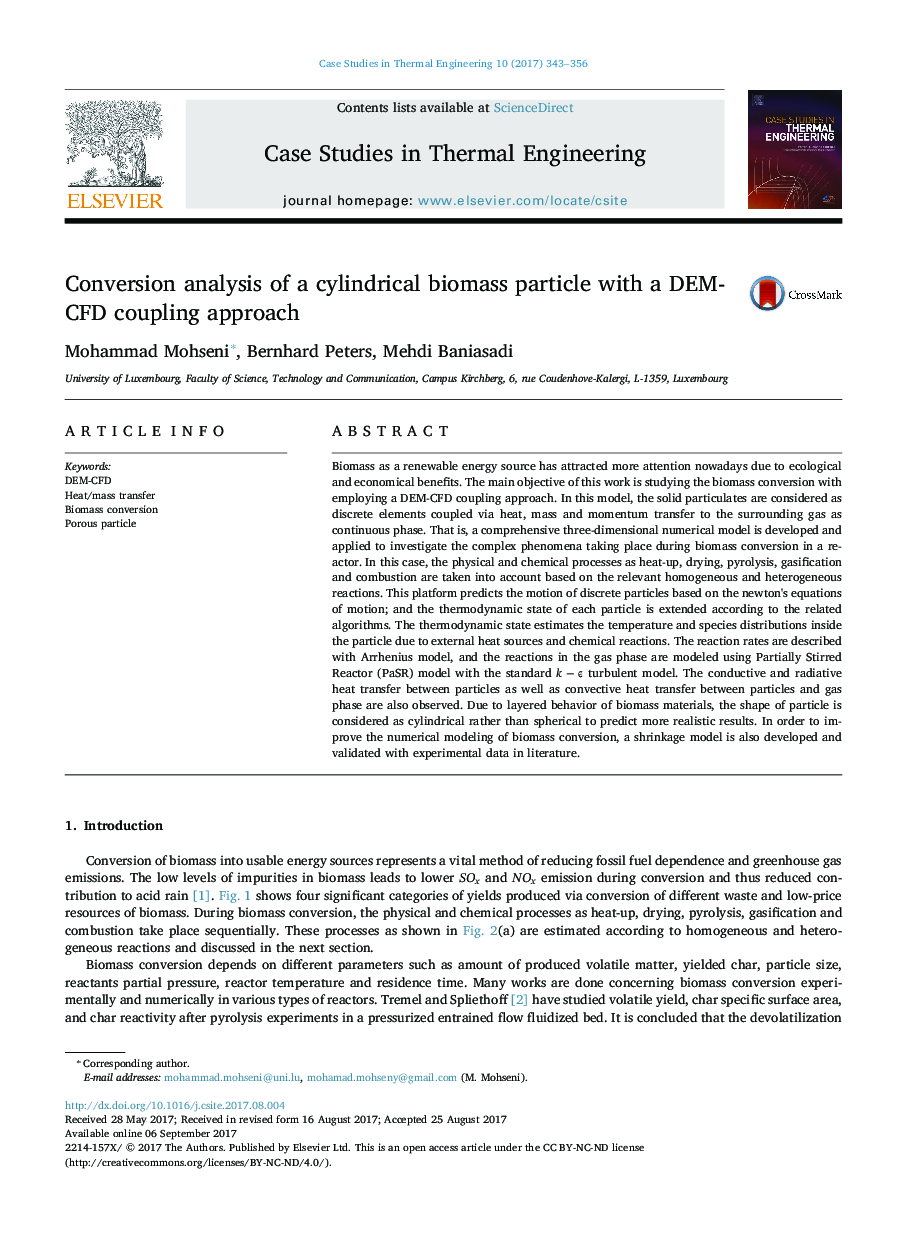| Article ID | Journal | Published Year | Pages | File Type |
|---|---|---|---|---|
| 5011231 | Case Studies in Thermal Engineering | 2017 | 14 Pages |
Biomass as a renewable energy source has attracted more attention nowadays due to ecological and economical benefits. The main objective of this work is studying the biomass conversion with employing a DEM-CFD coupling approach. In this model, the solid particulates are considered as discrete elements coupled via heat, mass and momentum transfer to the surrounding gas as continuous phase. That is, a comprehensive three-dimensional numerical model is developed and applied to investigate the complex phenomena taking place during biomass conversion in a reactor. In this case, the physical and chemical processes as heat-up, drying, pyrolysis, gasification and combustion are taken into account based on the relevant homogeneous and heterogeneous reactions. This platform predicts the motion of discrete particles based on the newton's equations of motion; and the thermodynamic state of each particle is extended according to the related algorithms. The thermodynamic state estimates the temperature and species distributions inside the particle due to external heat sources and chemical reactions. The reaction rates are described with Arrhenius model, and the reactions in the gas phase are modeled using Partially Stirred Reactor (PaSR) model with the standard kâϵ turbulent model. The conductive and radiative heat transfer between particles as well as convective heat transfer between particles and gas phase are also observed. Due to layered behavior of biomass materials, the shape of particle is considered as cylindrical rather than spherical to predict more realistic results. In order to improve the numerical modeling of biomass conversion, a shrinkage model is also developed and validated with experimental data in literature.
